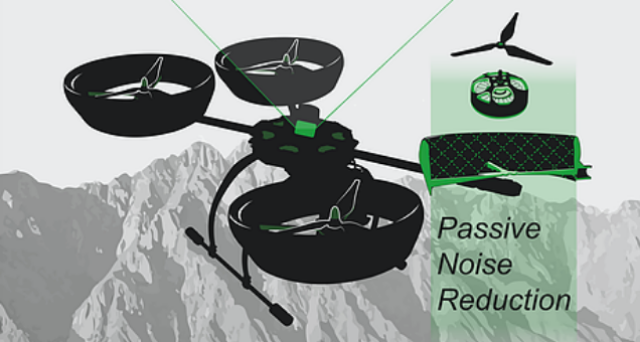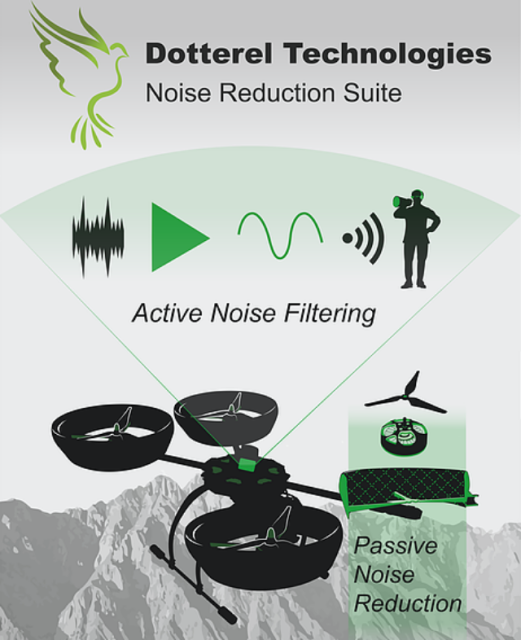New Zealand startup Dotterel Technologies has won an innovation award for its noise-reducing drone technology at the 2016 NAB Show, the world’s largest annual convention to launch innovative products to key influencers in media, entertainment and technology.
Auckland-based Dotterel was set up only nine months ago by three brothers – Mat Rowe, Shaun Pentecost, and Seamus Rowe – after they won $10,000 as finalists in Callaghan Innovation’s inaugural C-prize competition aimed at developing world-leading drone technology for the film, media, and gaming industries.
Since then they’ve been working on a prototype of their technology which reduces the sound of a drone’s engine, saving time and money for filmmakers who would normally have to eliminate the sound in post-production. The startup has also developed agricultural drone technology for field trial monitoring.
Dotterel’s Most Innovative Product award from Newsshooter.com, dedicated to the use of large sensor cameras and digital single-lens reflect cameras (DSLRs) for news and documentary shooting, is one of a number of different category awards the American website hands out annually at the NAB show which attracted more than 100,000 attendees in Las Vegas this week.
Seamus Rowe, the youngest of the three brothers at 22, said the award provides publicity for the fledgling company at a crucial stage of trying to get drone manufacturers interested in the technology.
The noise reduction shrouds are linked with nano-fibre acoustic dampening materials that reduce and direct radiated noise skywards and have the added benefit of further protecting the unmanned aerial vehicles (UAVs) and their operators from being hit by the propellers.
In early trials Dotterel’s technology reduced the drone noise while filming by 6 decibels and it will publish a paper next month from further research on its latest prototype which is likely to lift that figure closer to 10 decibels, Rowe said.
“If you’re flying a drone at 20 metres above and you get a 10-decibel reduction then it now sounds like it is 40 metres away – so it doubles the distance that it sounds like it is at,” he said.
Filmmakers would no longer need to get rid of the sound during post-production and it also opens the possibility of live broadcasts.
“It means they would not be called drones anymore but that name has kind of stuck now,” he said.
The two older brothers both formerly worked for the NZ-founded carbon recycling company LanzaTech.
Mat Rowe, now Dotterel chief executive, said they’re still working on a business model with options including having other drone manufacturers incorporate the noise reduction shrouds into their own frameworks or Dotterel building its own silent drones.
Rowe said the company is seeking seed capital or partnerships from drone manufacturers to further develop the technology.
Passive noise reduction
Lightweight motor shrouds lined with nano-fibre acoustic dampening materials reduce and direct radiated noise skyward. This greatly reduces noise pollution as experienced from the ground and enhances direct sound recording ability from the UAV.
Shrouding offers the additional benefit of protecting your UAV asset, surroundings and operators.
Active noise filtering
Aided by passive noise reduction the audio stream is filtered in real-time onboard the UAV, to remove the remaining drone noise. The filtered stream is transmitted wirelessly to the ground base-station.
Our proprietary solutions encompass active and passive noise cancelling technologies in our flagship Dotterel NRS products.
UAV’s and multicopters equipped with Dotterel NRS will not only be quieter allowing use in unique and restricted locations, but also able to transmit processed audio with UAV noise filtered.
Sources: Scoop; website



Can this product be used on any type of drones?
Aditya,
I suggest that you click on the link in the article to the Dotterel Technologies website and ask them